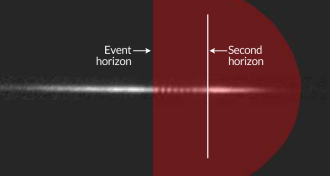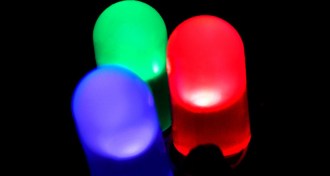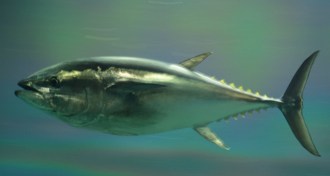Physics
Sign up for our newsletter
We summarize the week's scientific breakthroughs every Thursday.
-
 Physics
PhysicsFalling raindrops break terminal velocity
Unknown mechanism causes tiny raindrops to fall faster than terminal velocity.
-
 Quantum Physics
Quantum PhysicsHawking radiation spotted within sonic black hole
Lab-created sonic black hole emits energy as famed physicist Stephen Hawking predicted, though the experiment may not be definitive.
By Andrew Grant -
 Materials Science
Materials ScienceBlue LEDs win Nobel Prize in physics
Light-emitting diodes have led to more energy-efficient bulbs that are elbowing out incandescents.
By Andrew Grant -
 Chemistry
ChemistryLasers wrest oxygen from carbon dioxide
By zapping oxygen molecules off carbon dioxide, an experiment hints that Earth may have had breathable air long before the dawn of plants.
By Beth Mole -
 Physics
PhysicsBlue light-emitting diode earns three researchers Nobel Prize in physics
The invention of blue light-emitting diodes has been awarded the 2014 Nobel Prize in physics.
-
 Quantum Physics
Quantum PhysicsPhotons on roundabout route could get caught in action
Proposed twist on classic double-slit experiment could identify light that weaves in and out.
By Andrew Grant -
 Health & Medicine
Health & MedicineZero calories and other awe-inspiring science tales
In this issue, reporters look at artificial sweeteners, resurrecting a West Coast plant, quasiparticles and the future of our magazine and its parent non-profit, SSP.
By Eva Emerson -
 Quantum Physics
Quantum PhysicsQuasiparticles help physicists make sense of the world
To improve semiconductors, superconductors and other materials, physicists view a particle and its surroundings as one entity.
By Andrew Grant -
 Physics
PhysicsSignal of elusive Majorana particle emerges in a nanowire
New evidence supports existence of exotic Majorana particle — a particle that is its own antiparticle.
By Andrew Grant -
 Tech
TechSolar cell powers water-to-hydrogen conversion
High efficiency could make perovskite solar cells useful for generating environmentally friendly fuel.
By Sam Lemonick -
 Science & Society
Science & SocietyBanana peel slipperiness wins IgNobel prize in physics
Cartoons taught us that banana peels make for a slick trip to the floor, but scientists decided to find out just how slippery they could be.
-
 Math
MathSharks’ hunting paths may not be driven by math
Penguins, tuna, sharks and other marine hunters have been shown to use math to find food. But simulations suggest the behavior is a result of rough water, not complex calculation.